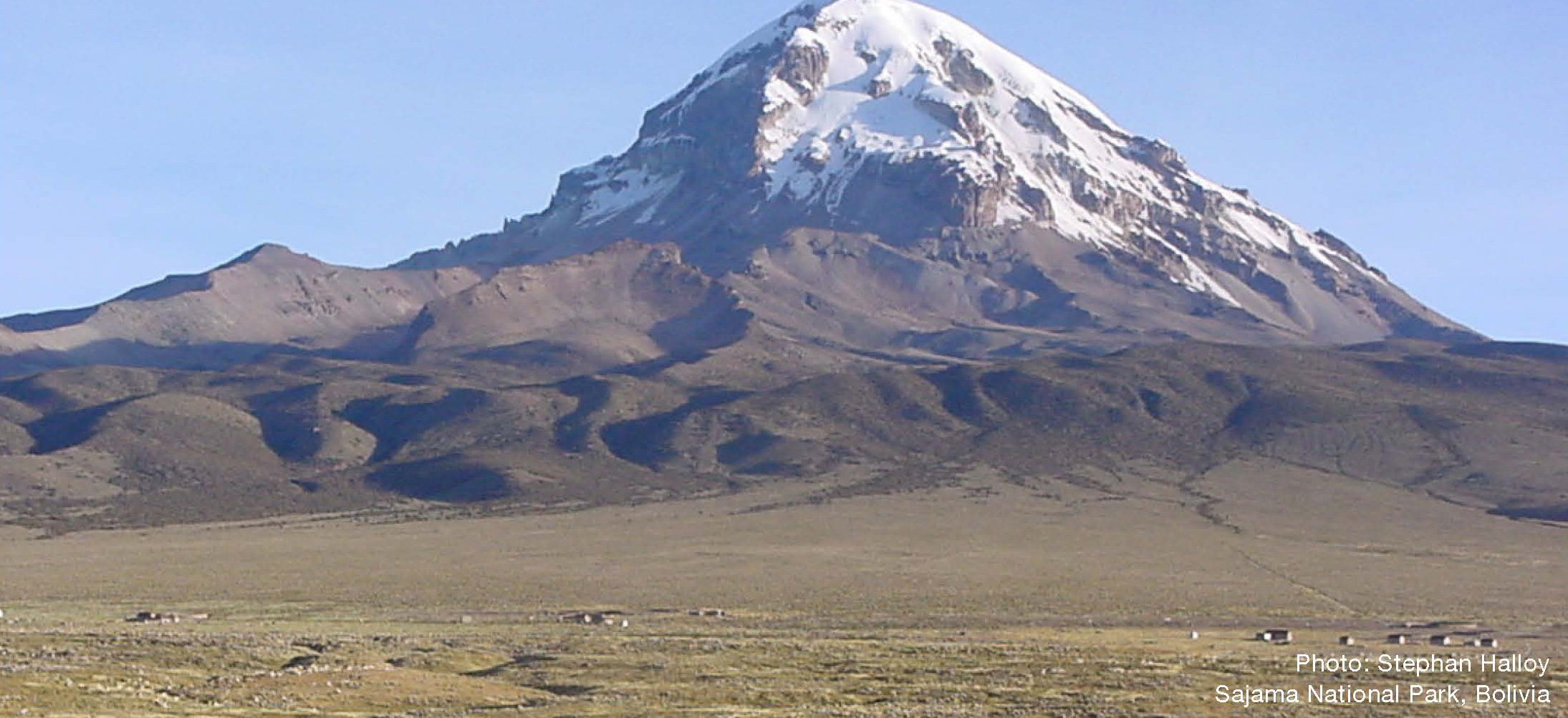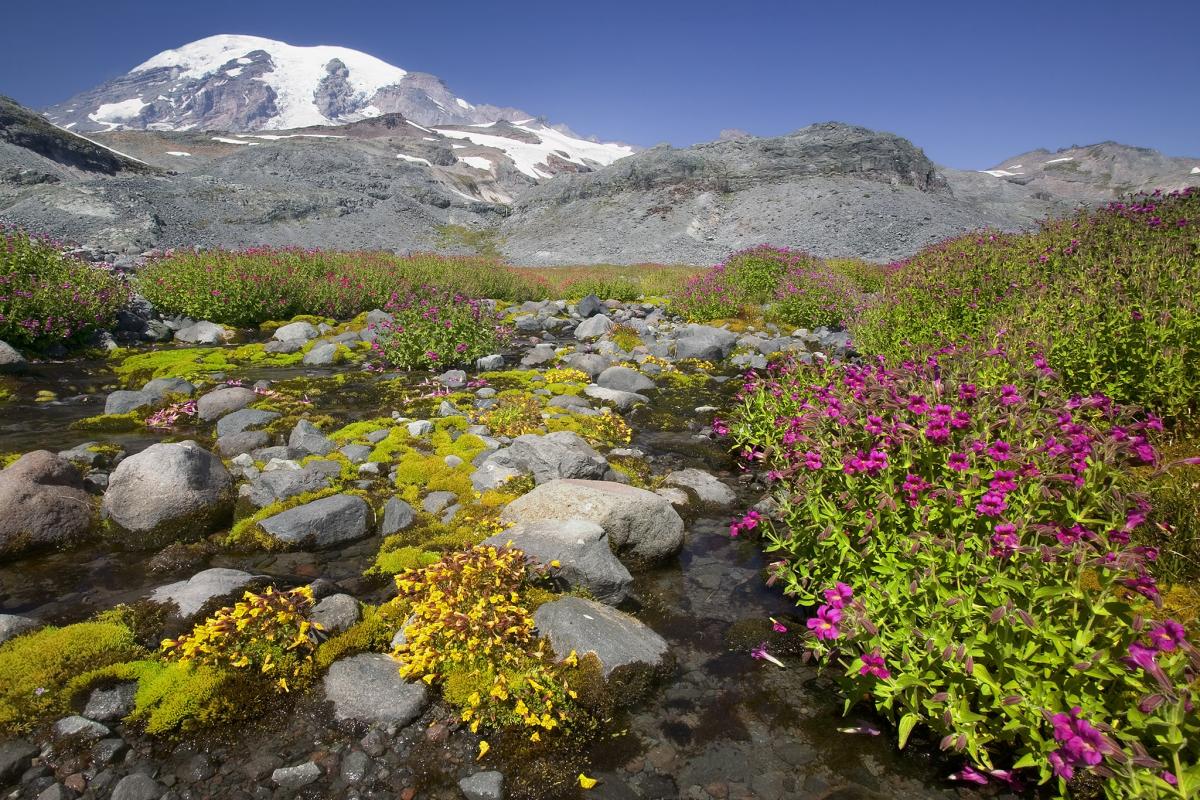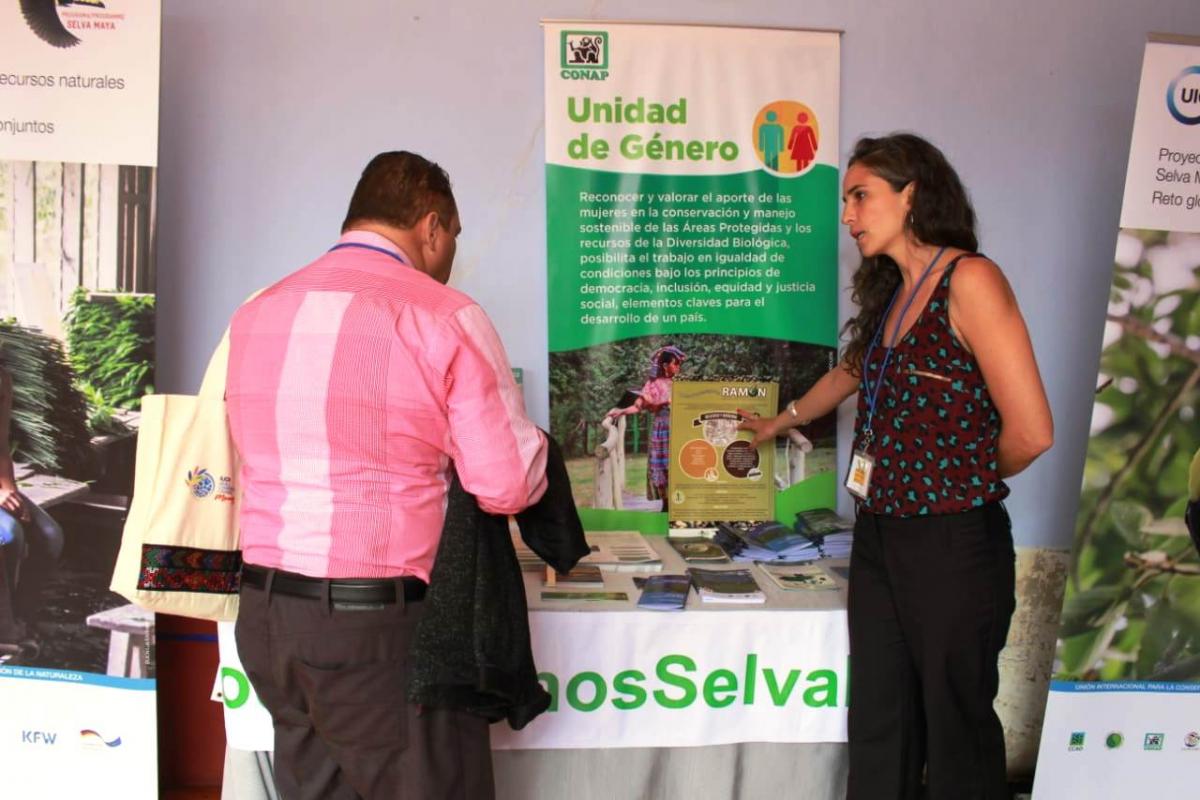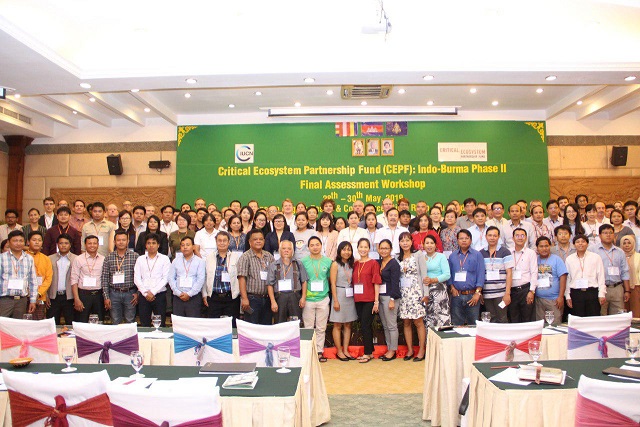South American Puna
Conservation in the Heights

Photo: Stephan Halloy
The South American puna is a large ecoregion, distributed along the Andean mountain range in northwestern Argentina, western Bolivia,northern Chile and southern Peru, located between 3000 and 4500 metres above sea level. It is dominated by grasses associated withthicket and shrubs.
In spite of its harsh climatic conditions, the puna has been anciently inhabited by human populations. Traditional management practicessuch as camelid grazing and agriculture terraces were compatible with natural resources conservation.However, fragility of the ecosystems and some inappropriate management practices – such as the introduction of sheep grazing– have resulted in environmental degradation and desertification. Furthermore, global climate change is likely to have a substantial impacton the puna ecosystems and its provision of goods and services. These in turn can have severe consequences on lives and livelihoodsof human populations.
Overall, the puna ecoregion is well represented in protected areas (14% without Chile). However, it is known that managementeffectiveness is quite deficient within a high proportion of these conservation units. Also, the wet puna has a smaller level of protection (6%).The challenge is to raise the sustainable use, conservation and protection status of the South American puna through an integrated strategy



